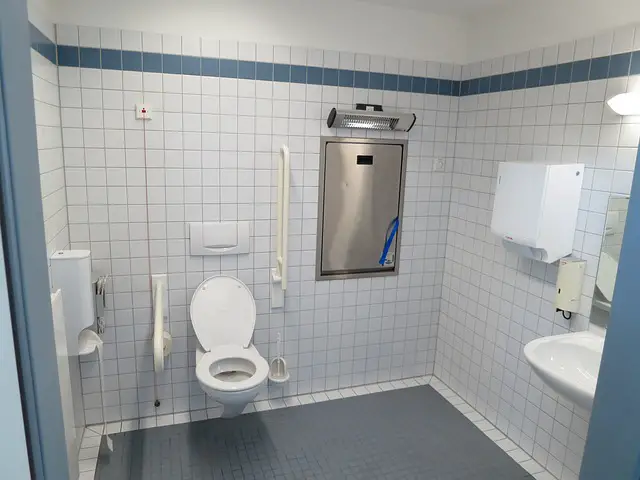Why Does Somebody Not Know How to Flush the Toilet?

It may not seem like a severe issue or one that is difficult to solve, but finding an unflushed toilet can be extremely frustrating to many people. What’s more many wonder why it is so difficult for others to remember to flush the toilet when they are done.
The reason for this comes down to the individuals who are doing it. The problem generally depends on the people involved. Typically, this is children, the elderly, those with special needs, and those from cultures that lack flush toilets.
The reasons for not knowing how to flush the toilet could be complex in cases such as those involving people with special needs. However, it usually will come down to forgetfulness, such as with children and the elderly.
Additionally, it could be a lack of understanding, such as with children or those from areas without flush toilets. Also, if the problem is recent; make sure the flush handle is working correctly.
Children are the most common cause of this no-flush problem. However, they are also probably the easiest to deal with. There is already a lot of material written to help parents teach their children to flush the toilet properly.
There are many different strategies, and you may have to try several of these to reach your kids. Sometimes it will be because they are in a hurry and do not understand the importance. However, it could also be a small act of rebellion if they are angry.
The final primary reason would be if the children are too young and have not yet learned to flush dependably. Here are some tips to help you train young children to flush.

Relatable consequences: Many parents think that providing a relatable penalty for the offense is best because these consequences are close to a natural consequence. This will help them to remember the penalty and associate it with the offense. This might be forcing the child to come back, flush the toilet, clean the bowl, and rewash their hands.
Punishment: For older kids and those doing it on purpose, punishment may be more appropriate. This is because they know what they are supposed to do but choose to ignore it. A popular option is to dock their allowance each time you find the toilet unflushed. This can be particularly effective when multiple children don’t admit who did it. Just tell them you will dock everyone’s allowance since it could be any of them.
Rewards: To help younger children remember, it can be a good idea to provide rewards to reinforce them every time they remember to flush. Tell your child what you expect and work out a way to track every time they flush and what reward you can give them. After a while, they will likely learn to flush and will no longer need the reward.
Children with special needs are often challenging to teach to use the toilet. As a result, skills like flushing the toilet may never be fully learned or practiced 100 percent of the time.
This may mean as older individuals, they will never dependably flush the toilet. To help them, you can try a few things, and reminders can help at any age.
There are many excellent resources out there to help you to teach toiletry skills to children with special needs. You may want to check some of them out. But, to get you started, here are some strategies to help.
Graduated guidance: Graduated guidance is the most common way to teach toiletry skills to people with special needs. With this method, you will simply help them by providing the least help necessary at every step of the way. If they forget to flush the toilet, mention it. If this doesn’t work, give as much assistance as is necessary for them to do it.
Rewards: Simply recognizing every time they do something right, such as flushing the toilet and washing their hands, can reinforce the behavior. Over time you can reduce the rewards as the behavior becomes routine.
Reminders: At any age, a reminder can help, and everyone can work out together what will help them remember. A good way may be placing posters or notes around the bathroom to help them with the steps they need to do. Maybe sticky notes near the flush handle and sink, alternatively, just one large poster on the wall may help.
There are many reasons why an elderly person may not know how to flush a toilet. It could be as simple as not understanding how a specific toilet model works. Or the problem may be due to cognitive issues from being forgetful to dementia.
If an elderly person suffers from dementia, they slowly lose their ability to do even basic everyday tasks. Therefore, over time a person with dementia will cease to remember how to flush a toilet.
If an elderly person is just forgetful, putting a sign up to remind them to flush may help. However, if the problem is a little worse, posting a reminder with pictures of the basic toileting steps may help. Whatever the case, some patience will likely be needed.
Some people may not know how to flush a toilet because they have very different toileting practices where they live. In some countries, people use open spaces as a restroom. Other places have different types of toilets.
Some countries have squat toilets. Instead of flushing, a bucket of water and a cup may be placed nearby these toilets for cleaning. Other toilets may have a pull cord for flushing. With the different types of toilets in other countries, someone could easily not know to flush.
Related Questions
You can use a bucket of water to flush your toilet if you don’t have running water. You’ll need at least a gallon of water. Then, start pouring the water slowly at first, and then finish pouring quickly.
There is another way to flush the toilet without water. Take off the tank lid and pour the water in until it is above the overflow tube. This method does take more water, so make sure you have more than a gallon of water.